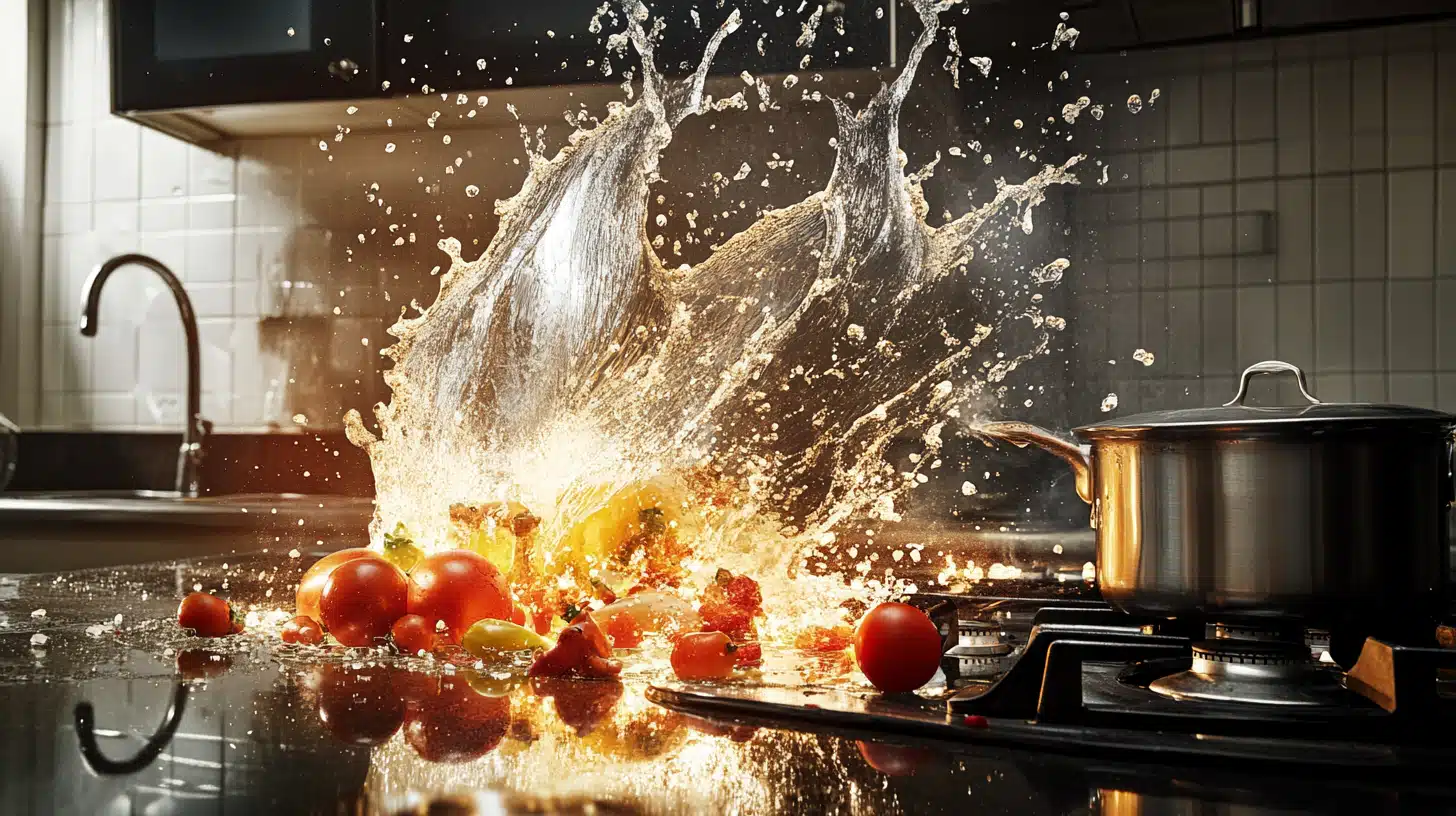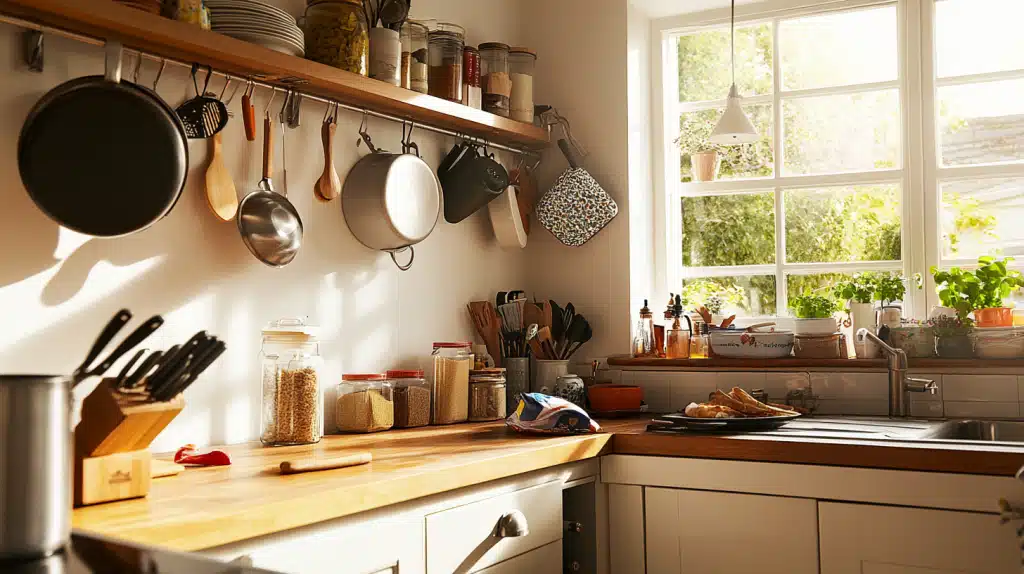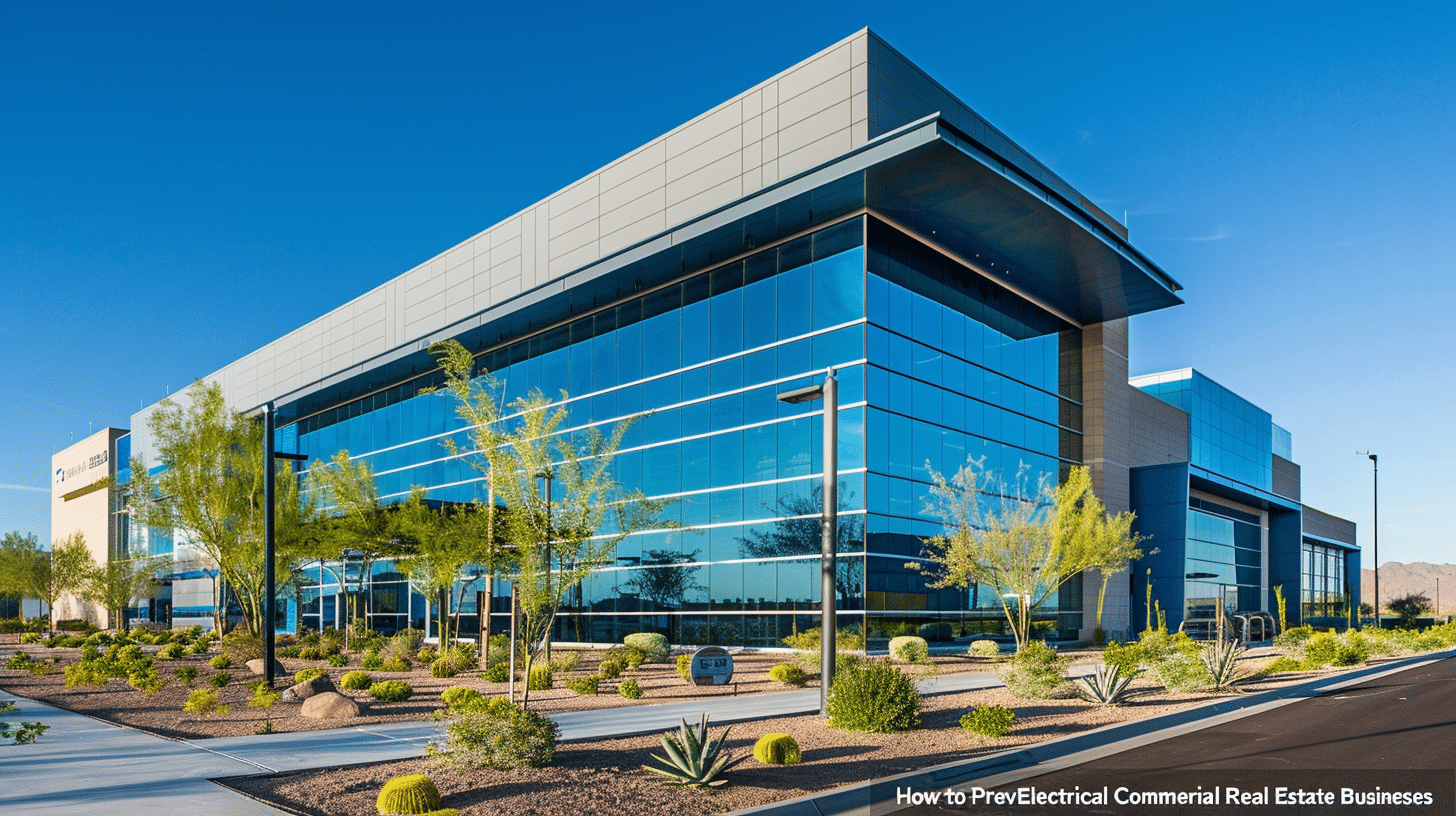The kitchen serves as the space where magic occurs because people prepare meals while their flavors mix and friendly discussions take place. The delicious kitchen aromas and sizzling pans conceal several dangerous elements that exist in this space.
A single improper movement in the kitchen creates the potential for safety disasters that range from burns and cuts to food contamination and electrical accidents.
Most kitchen accidents appear random but proper safety measures would stop these incidents from happening. Knowing about standard kitchen dangers will protect you from accidents when you handle knives or prevent grease fires or maintain proper food storage.
What methods should you use to maintain kitchen safety while maintaining efficiency? The following essential safety tips will help you cook confidently as they guide you through preventing the main kitchen disasters.
8 Most Common Kitchen Hazards and How to Avoid Them
1. Fire Hazards: The Leading Cause of Kitchen Accidents
A kitchen fire becomes one of the fastest ways to transform a meal into a catastrophe. The initial sparks of kitchen fire frequently appear from neglected pans or extended oil heating or toaster crumbs that ignite. Flames that spread uncontrollably emerge from harmless sizzling sounds within mere seconds. The primary cause of kitchen fires is unattended cooking, which makes fire hazards the main kitchen hazards.
Hidden risks often go unnoticed. Kitchen fires are easily started by the combination of stove-top grease accumulation and appliance dust buildup together with heat-sensitive materials such as dish towels and wooden utensils within close proximity to heat sources. Any substance, including cooking oil, can ignite at its flash point after heating past its boiling point.
The first step to avoid kitchen fires includes both awareness about potential hazards and scheduled maintenance of equipment. You should maintain constant proximity to the stove while cooking, especially during frying, grilling, or boiling activities. The prevention of kitchen fires starts with regular maintenance of stovetops and range hoods while keeping heat-sensitive items at a safe distance from heat sources. Everyone should also learn to use the fire extinguisher located in the kitchen.
Busy individuals struggle to maintain their kitchens in addition to fire prevention tasks. Hiring a house cleaning service in Austin can help ensure that grease buildup, dust, and hidden fire hazards are routinely tackled, keeping your kitchen not just spotless but safe.
2. Slips and Falls: A Common but Overlooked Danger
Your kitchen exists to prepare food yet just one wrong movement in the kitchen can lead to a dangerous fall. Any well-arranged kitchen area becomes dangerous for falls when floors become slippery and spaces become cluttered and lighting conditions deteriorate. The presence of spilled liquids, grease splatters and food debris usually becomes obvious only after someone experiences a bruised knee or more severe injury.
Thousands of serious injuries occur each year from falls and slips that create major health risks. Small spills become invisible when lighting is inadequate and pet bowls along with misplaced rugs develop hidden hazards. The entry of outdoor hazards such as rain, snow and ice through the door creates additional dangers for floor safety.
Making these accidents less likely requires people to be consistent in their preventive measures. Quickly clean up all spills that occur, particularly in sink and stovetop areas. Non-slip mats installed in busy areas help create better traction to prevent accidental slipping.
Good illumination systems help people identify both spills and pathway obstacles. The clearance of walkways becomes crucial for fall prevention since properly securing loose rugs and tucking chairs in place and moving pet bowls from footpaths can significantly decrease the risk of accidents.
Workplace kitchens present greater hazards than home kitchens when it comes to safety risks. Research indicates that thirty percent of slip and fall incidents produce moderate to serious injuries that occasionally lead to death. Safety measures in kitchens should be a priority because they stop unnecessary accidents that produce enduring negative effects.
3. Grease Buildup Increases Fire Risks
A pan sizzles when you fry bacon or cook stir-fry on high heat and deep-fried foods also produce this sound. The invisible grease forms a dangerous layer which quietly accumulates on your stovetop and range hood and oven surfaces. The invisible buildup from cooking will eventually turn into a flammable layer that waits for sufficient heat to transform your kitchen into a hazardous area.
The scariest part? A tiny spark or overheated pan has the power to ignite this flammable substance, which spreads flames across the area within seconds.
Grease penetrates into ventilation systems along with hidden areas where normal cleaning methods prove ineffective. The accumulation of this invisible substance turns into a challenging and nearly invisible fire hazard that homeowners typically overlook.
Regular cleaning operations serve as the most effective method to stop this problem from developing. After each cooking session clean all surfaces while performing thorough monthly deep cleanups which should focus on range hoods and ovens and ventilation systems. Stubborn stains? A combination between baking soda and vinegar effectively breaks down strong grease stains.
The professionals at Austin house cleaning services will maintain your kitchen free from grease and safe from fire hazards if you prefer to let them handle the heavy cleaning work.
What should you do in case you encounter a grease fire? You must never attempt to use water for extinguishing the fire. The application of water will make flames spread rather than extinguish the fire. Instead, smother the flames with a lid or reach for a kitchen-approved fire extinguisher.
Using a small amount of grease for flavoring food is acceptable but excessive grease in unintended areas might lead to dangerous situations.
4. Electrical Hazards: The Hidden Kitchen Threat
The three elements of water heat and electricity create dangerous situations when they intersect within kitchen areas. Modern kitchens contain various electrical home appliances that include toasters and coffee makers and blenders and microwaves which assist people in their daily tasks. Convenient home appliances can become hazardous whenever wiring shows damage or outlets reach their capacity or when a person approaches the kitchen sink.
One of the biggest dangers? The proximity of multiple appliances to sinks presents a danger because water and electricity generate destructive chemical reactions. The combination of damaged cords with overloaded electrical outlets and old wiring systems significantly increases both electrical fires and unsafe shock risks. Insufficient wire insulation leads to heating conditions which cause sparks and possible electrocution incidents.
Protecting your kitchen area starts with these basic electrical safety measures. To create a safe water-electrical distance both electrical cords and appliances need proper separation. Users should unplug all high-wattage appliances before they leave them inactive.
The inspection of cords needs immediate attention because you need to replace wires that show signs of wear. Plugging appliances separately from each other at the outlet prevents overheating.
Having a Ground Fault Circuit Interrupter (GFCI) installed in your kitchen enhances safety because this safety device detects electrical current imbalances and automatically shuts off the power supply. For kitchen wiring inspection and grounding verification, you need a licensed electrician to check the system to see if an inspection is needed.
5. Burns and Scalds: The Risk of Hot Surfaces and Liquids
People can experience painful burns in mere seconds whenever they take their eyes off the stove to reach for pots or watch steam escape or observe oil popping in the pan. Children who are attracted by cooking smells and sights usually fail to recognize the hazards that adults understand.
Burn injuries mostly result from unintended contact with hot cookware and boiling liquids as well as steam. The act of pouring cold water into hot oil leads to dangerous splattering which sends scalding liquid through the air across the kitchen. Any loose clothing poses a hidden threat because flowing sleeves could ignite when they approach gas flames or hot burners.
Taking small preventive measures remains essential to burn prevention. You need to wear heat-resistant gloves or oven mitts to protect your hands from hot surfaces. Keep pot handles directed toward the inside to stop spills while you should avoid haste when transporting hot liquids. Letting your water and oil reach room temperature before cleaning will stop accidental splashes from occurring.
Safety measures must be implemented in homes with children who are still young. The risk of stove accidents decreases when children stay away from the stove while parents also teach them about heat safety. Taking a few basic safety measures at the present time will help you avoid both painful injuries and avoidable accidents in the future.
6. Knife Injuries: Mishandling Sharp Tools
Kitchen knives serve essential functions in cooking yet become dangerous when improperly handled. A brief instance of negligence when handling kitchen tools can transform your kitchen equipment from a useful tool into a dangerous object. The most common culprit? Dull knives.
Blunt blades actually heighten the chances of injury due to their need for additional force and tendency to slip, which results in hand contact with the blade.
The combination of dull blades and improper knife-handling techniques creates comparable risks during knife use. Trying to cut toward your body while catching a knife that falls will commonly result in serious cuts and deep wounds. The presence of knives in sink areas becomes more hazardous when they remain underwater or with food remains because these conditions reduce visibility and increase the risk of accidental cuts.
Using a sharp knife for your tasks remains the most important safety measure in kitchen work. A sharp knife provides better safety because it needs less strength to operate and avoids accidental slipping. Knives should not be thrown randomly into drawers for storage. The best storage solution for knives is either a specific knife block or a magnetic strip, which provides both safety and quick access.
Stable cutting boards act as safety measures against slipping accidents. If you drop a knife, you should avoid reaching for it because it is safer to step back and let it drop. Devote your full attention to the present job you are performing. Using a knife in haste always leads to dangerous results.
7. Food Poisoning from Improper Food Handling
Proper training also plays a major role in preventing these risks. Earning your Harris County Food Handler Certification can help you understand safe food handling, storage, and sanitation practices. This certification provides practical guidance that reduces the chances of contamination, keeping your kitchen safer for everyone.
Food contamination practices that result in bacteria multiplication should not affect your dining experience.The frequency of foodborne illnesses surpasses public perception because people make several mistakes when handling food including cross-contamination and incorrect food storage methods and insufficient cooking of meat.
When you use one cutting board to cut raw chicken and vegetables it can result in dangerous bacterial infections which include Salmonella and E. coli in your food.
The primary reason for food poisoning is when perishable items stay exposed for too long. Bacteria grow at their fastest rate when the temperature falls between 41°F and 140°F (5°C–60°C), which defines the “temperature danger zone.”
Dairy products, together with meats and cooked foods, remain dangerous to eat after staying at room temperature for too long despite showing normal appearance and smell.
The protection of food safety requires developing correct storage techniques and preparation methods that minimize illness risks. Raw meats should be placed separately from every other food item, including dairy products and ready-to-eat foods, to prevent contamination. The preparation of raw meat requires its own designated cutting board, which is separate from those used for fruits and vegetables, and cooked food should never touch uncooked surfaces.
Elimination of dangerous bacteria happens through cooking foods to their proper internal temperature while handwashing before and after food handling stops germ spread.
Health problems become severe when someone experiences food poisoning beyond minor inconveniences. Following these fundamental security practices will enable you to prepare fresh and secure meals without facing any health issues.
8. Improper Storage Leading to Tipping and Falling Objects
Opening a cabinet may result in a flying pan hitting you by chance. Your kitchen storage setup is causing problems because it results in these types of incidents. The combination of overloaded shelves with pots stacked similarly to Jenga and heavy appliances placed in high cabinets leads to inevitable unexpected accidents.
Any injury risk exceeds the concerns about kitchen clutter. A glass bowl that falls will shatter to create cuts while a falling toaster might injure your feet and an overloaded shelf can completely collapse. People commonly get injured because they place items in storage locations based on space rather than safety.
The fix? Think low and secure. All heavy appliances and cookware need to stay on lower shelves for better accessibility. Purchase stackable organizers which will stop objects from falling over.
Securely closed cabinets should be used to store glassware and delicate items to prevent sudden accidents. A kitchen that needs organization requires a decluttering session because avoiding objects that drop during food preparation should not be a regular occurrence.
Conclusion
The kitchen space exists to prepare homemade masterpieces instead of causing havoc. Dangerous situations easily emerge when working with hot surfaces together with sharp knives and unpredictable spills in the kitchen area. The good news? Your kitchen environment remains safe by implementing basic safety practices and proper organization methods that completely control preventable hazards.
Small precautions regarding knife storage along with grease control lead to substantial kitchen safety improvements. A kitchen update that focuses on maintenance ensures both safety and prevention from accidents for household members. Professional house cleaning services based in Austin will handle complex cleaning tasks in areas that are difficult to reach to maintain both cleanliness and safety in your home.
With a safe kitchen environment, you can fully experience cooking pleasure since safety measures eliminatethe potential dangers of falling items or kitchen fires. Putting in a small amount of preventive effort today will result in a kitchen that stays safe and accident-free for future days without any risks.










